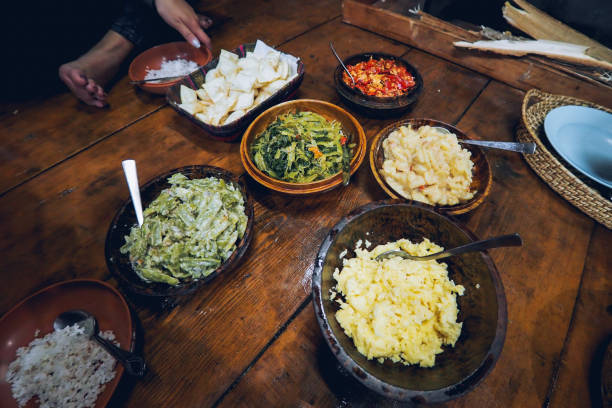Discovering the Culinary Marvels of Bhutanese Cuisine
Welcome to an exciting gastronomic journey! Today, we’ll venture into the highlands of Bhutan, a small Himalayan kingdom where traditional food culture is as vibrant and unique as the colorful prayer flags adorning its landscape. Bhutanese cuisine is a tapestry of flavors, rooted in locally-sourced ingredients, spicy chilies, and age-old cooking techniques. The national dish, Ema Datshi, a spicy stew of chilies and homemade cheese, is a testament to their love for heat. But it isn't just about the spice; there's a balance of flavors that make their dishes tantalizing.

An Ode to Bhutan’s Red Rice
The culinary world of Bhutan is incomplete without a mention of red rice. This staple grain, grown at 8,000 feet in the Paro Valley, is imbued with a nutty flavor and a slightly crunchy texture. It’s the perfect accompaniment to hearty stews and lends itself well to creative culinary experiments.
Bhutan’s Brew: The Tradition of Ara
Bhutan’s indigenous alcoholic beverage, Ara, is a unique aspect of its food culture. Ara, brewed from rice, barley, or wheat, is often enjoyed heated with butter and eggs. This traditional drink, served in social gatherings, is an insight into the community-centric ethos of Bhutan.
The Art of Preserving: Hoentoe and Jasha Maru
Hoentoe, aromatic buckwheat dumplings from Haa Valley, and Jasha Maru, spicy chicken stew from Thimphu, are prime examples of Bhutan’s expertise in preserving food. The slow-cooking and fermenting techniques used here infuse each dish with a depth of flavor and nutrition.
Bhutanese Cuisine: A Reflection of Sustainable Living
Bhutan isn’t just about unique flavors. It’s a country that’s carbon negative and leans heavily towards sustainable living. Their food culture is a reflection of this lifestyle, with a focus on organic farming, seasonal produce, and minimal waste.
Bhutan on Your Plate: Tips to Remember
- Bhutanese cuisine is spicy! However, you can control the heat by moderating the amount of chilies.
- Bhutanese meals are predominantly gluten-free and offer many vegetarian options.
- Red rice is a Bhutanese specialty. Try it out to experience authentic Bhutanese flavor.
- Bhutanese cuisine emphasizes fresh and organic ingredients. Try to replicate this in your culinary experiments.
In conclusion, Bhutanese cuisine offers a rich tapestry of flavors, a reflection of the country’s vibrant culture, and the people’s sustainable lifestyle. As you explore these culinary marvels, remember that each dish tells a story of tradition, community, and a deep respect for nature. So, the next time you’re in the kitchen, why not try a Bhutanese recipe and bring a piece of this Himalayan kingdom to your plate?




